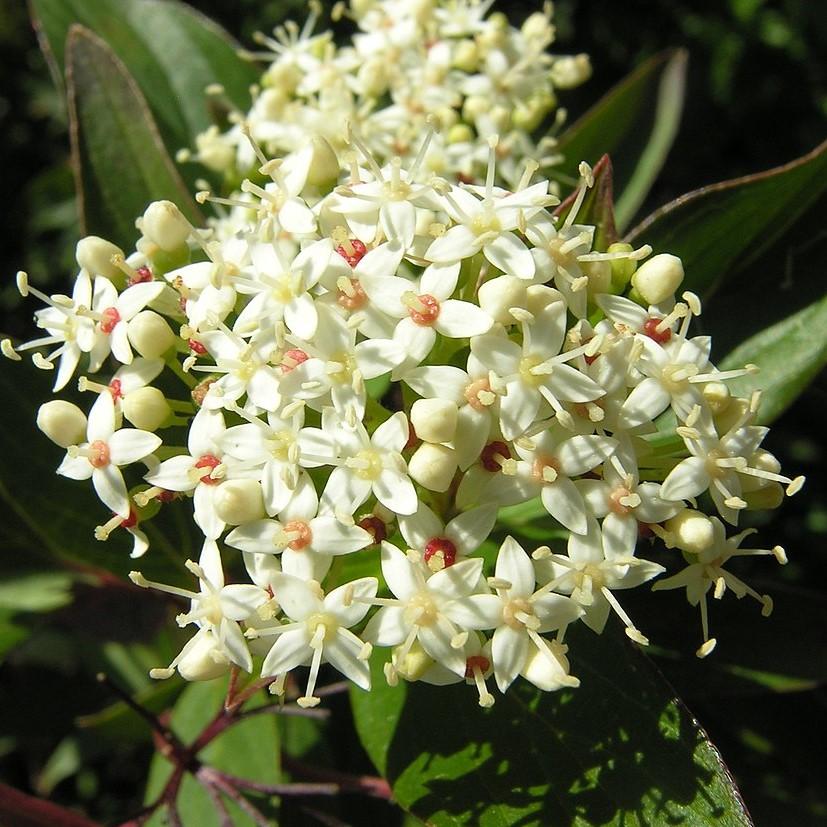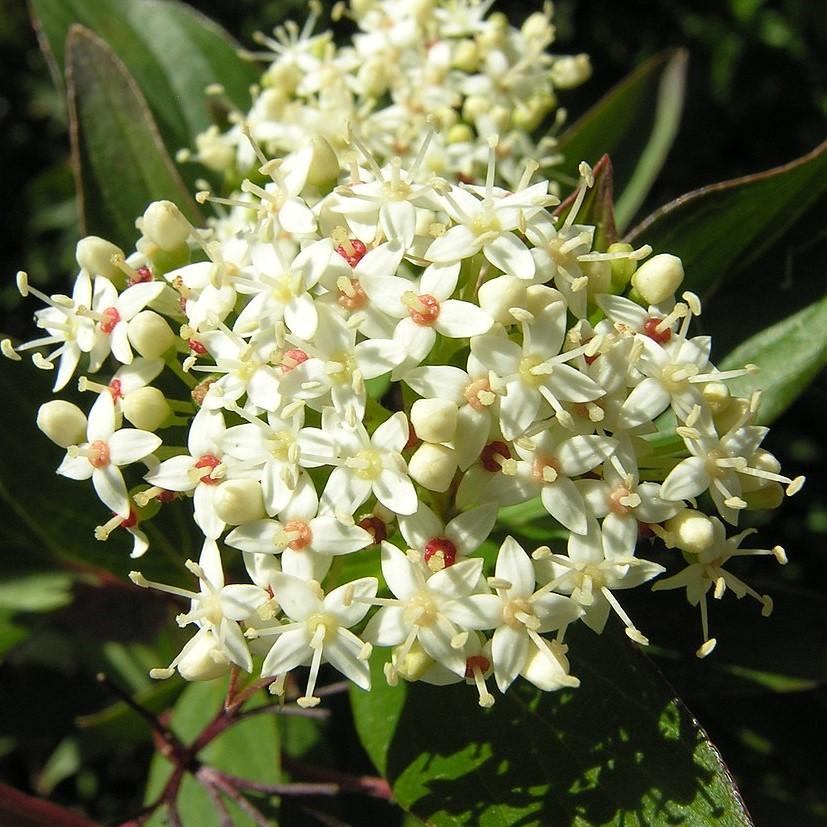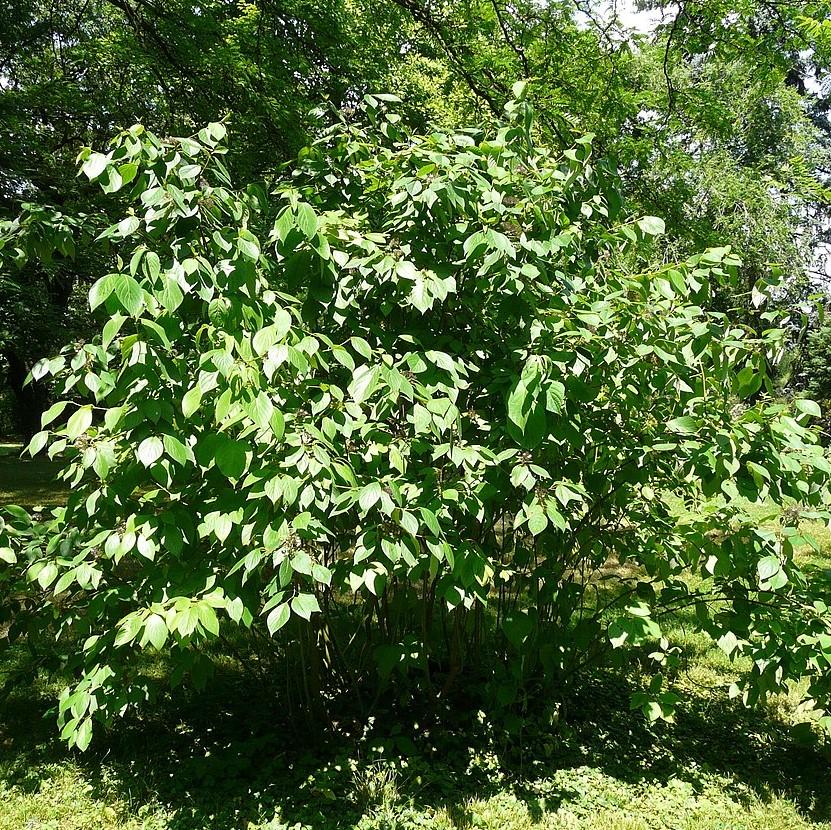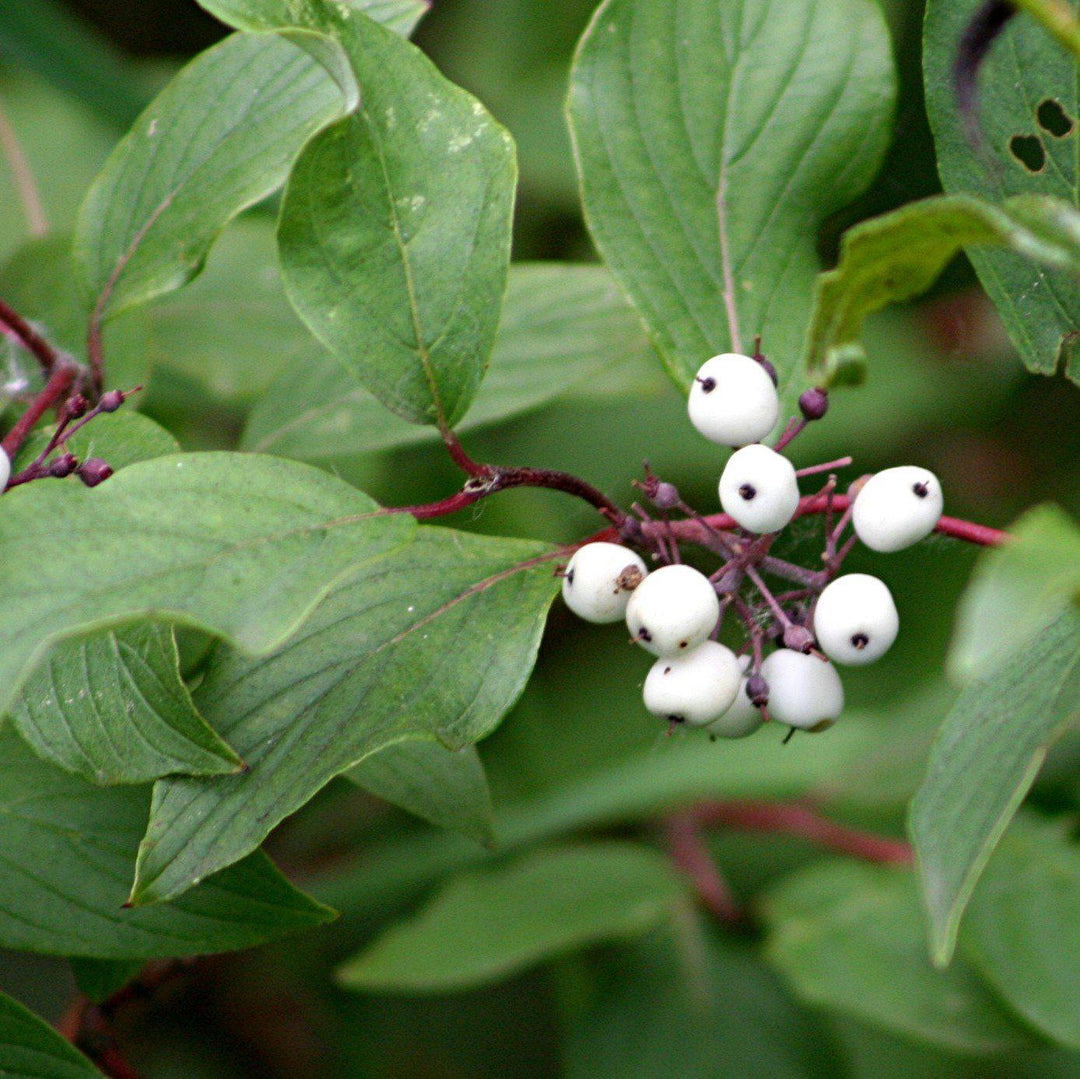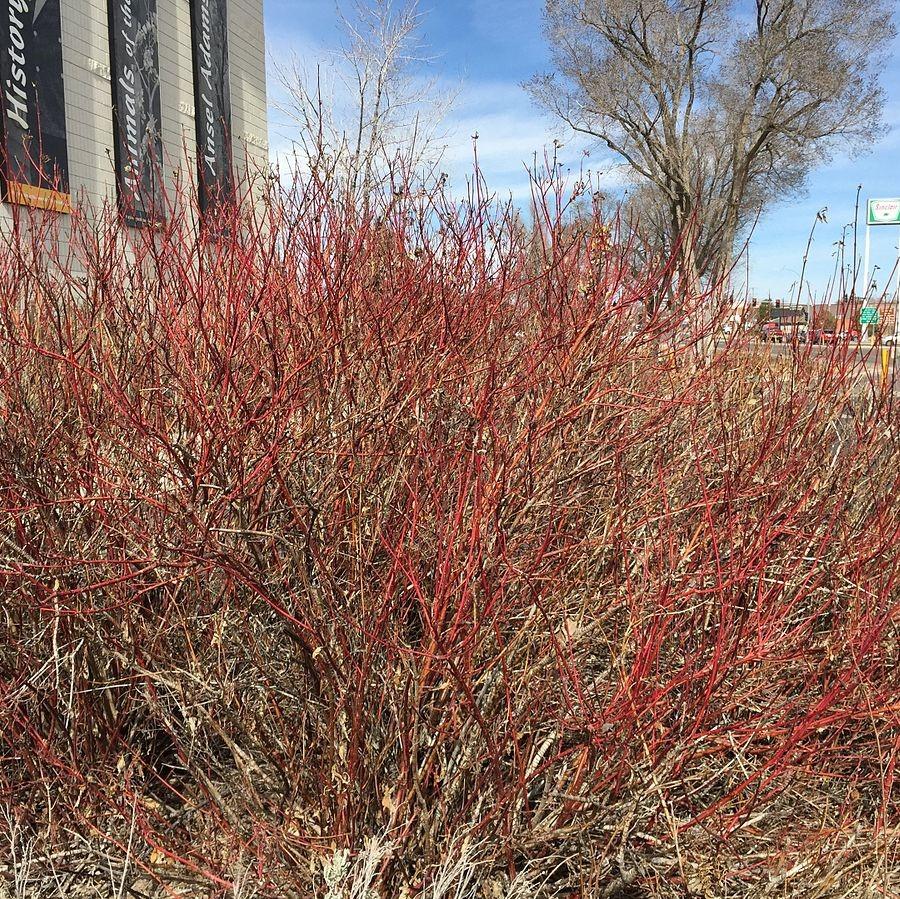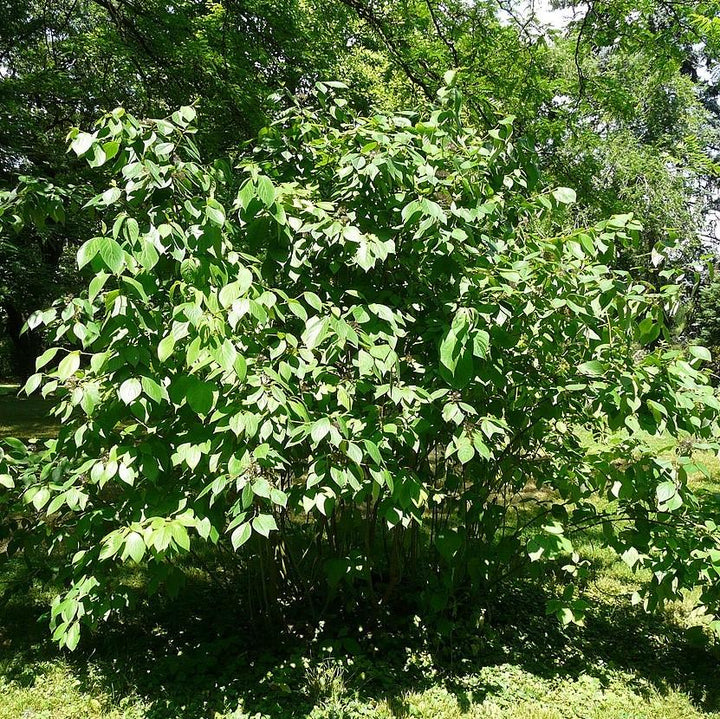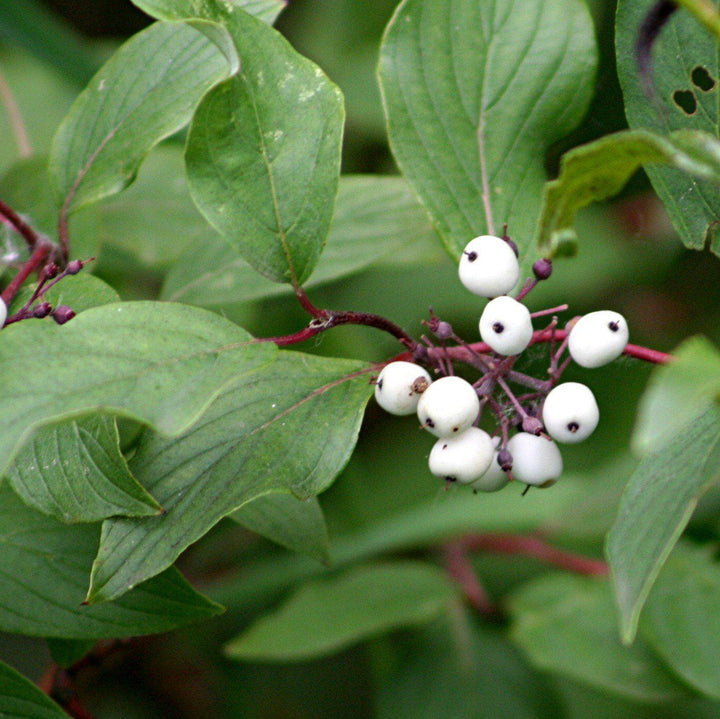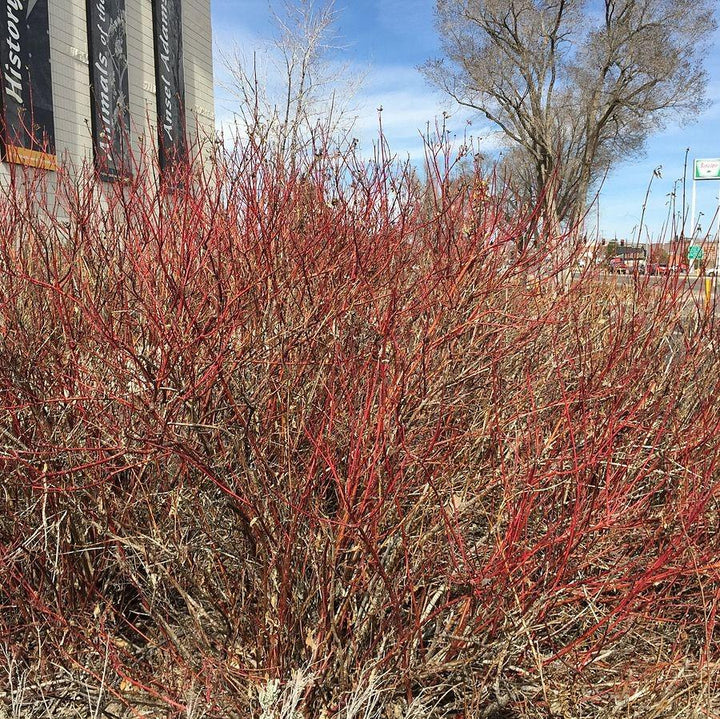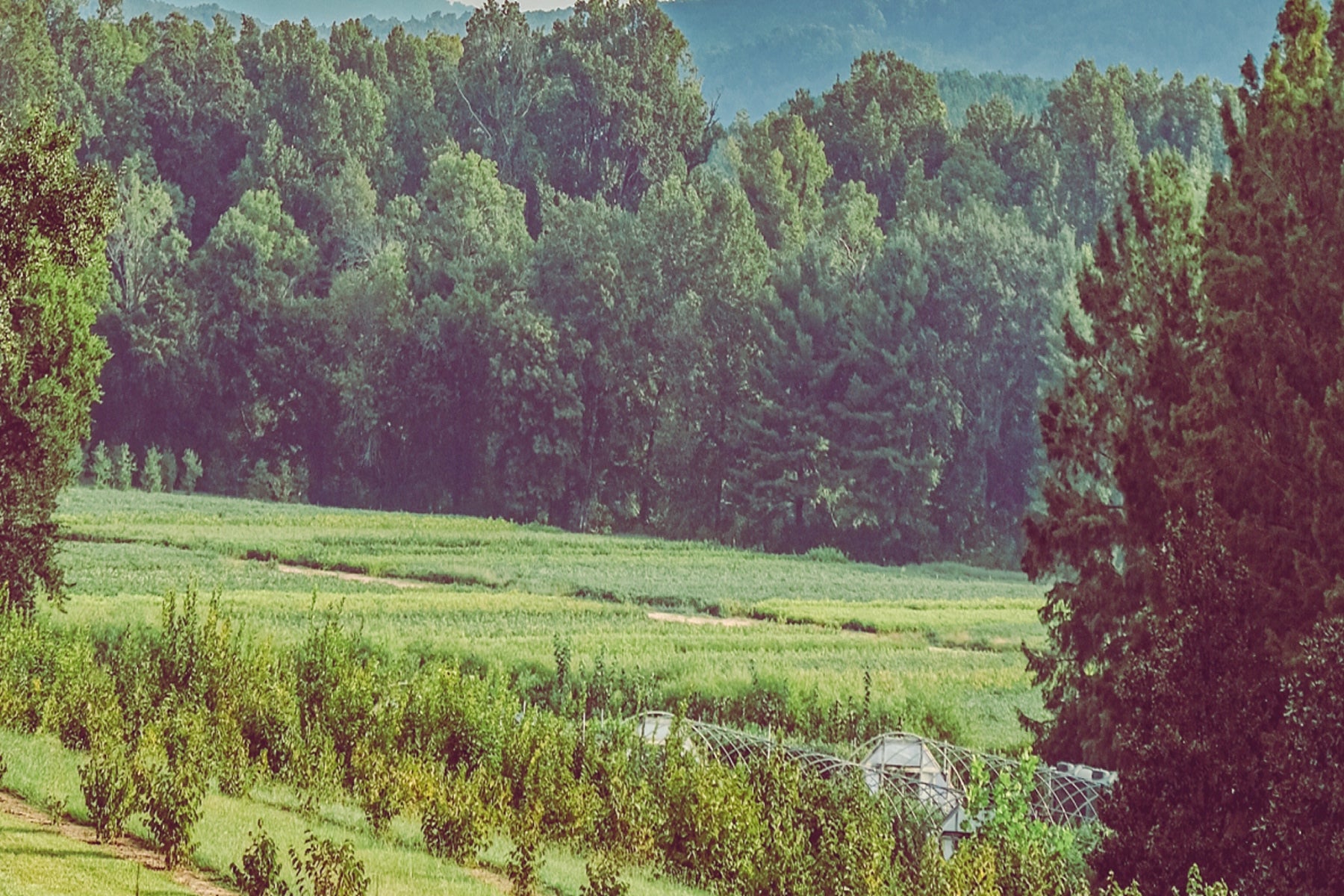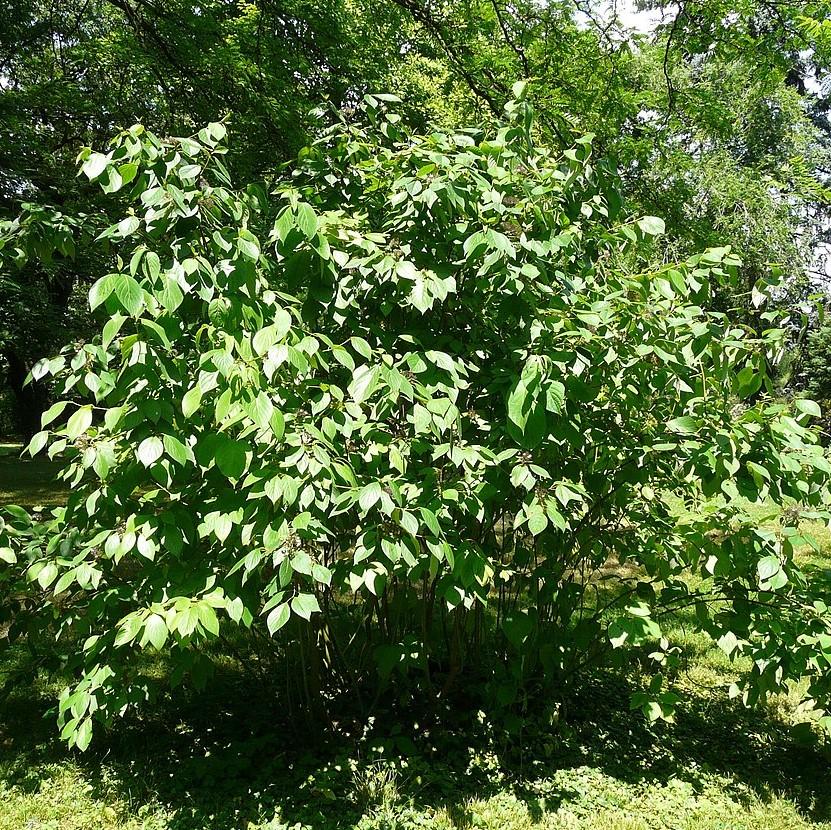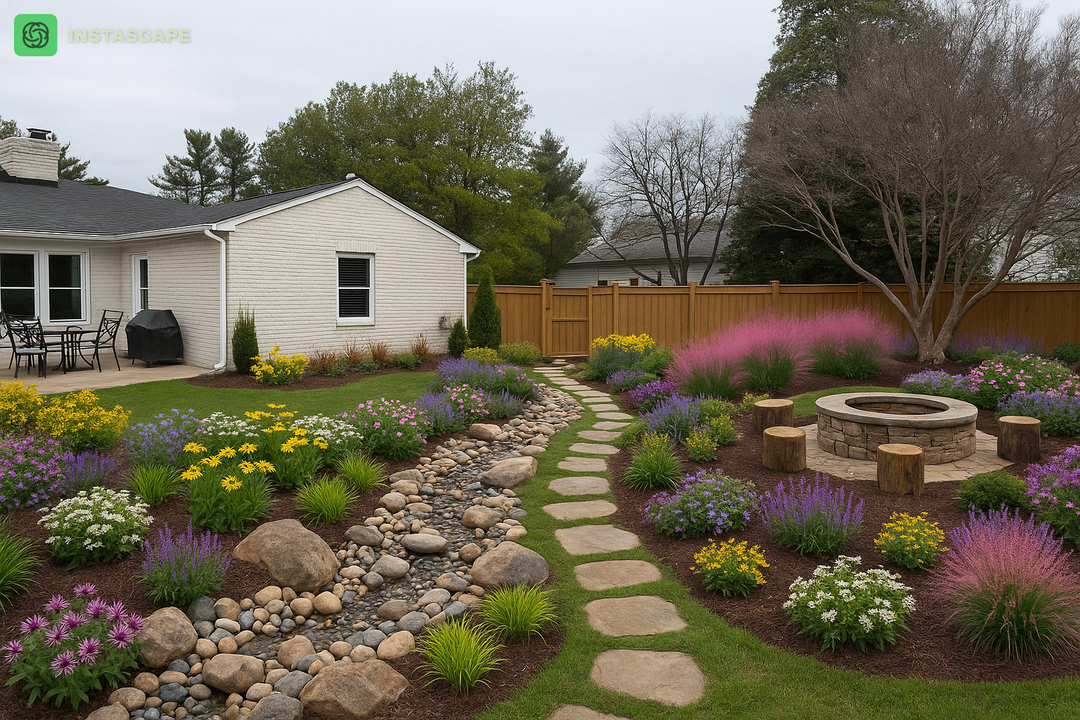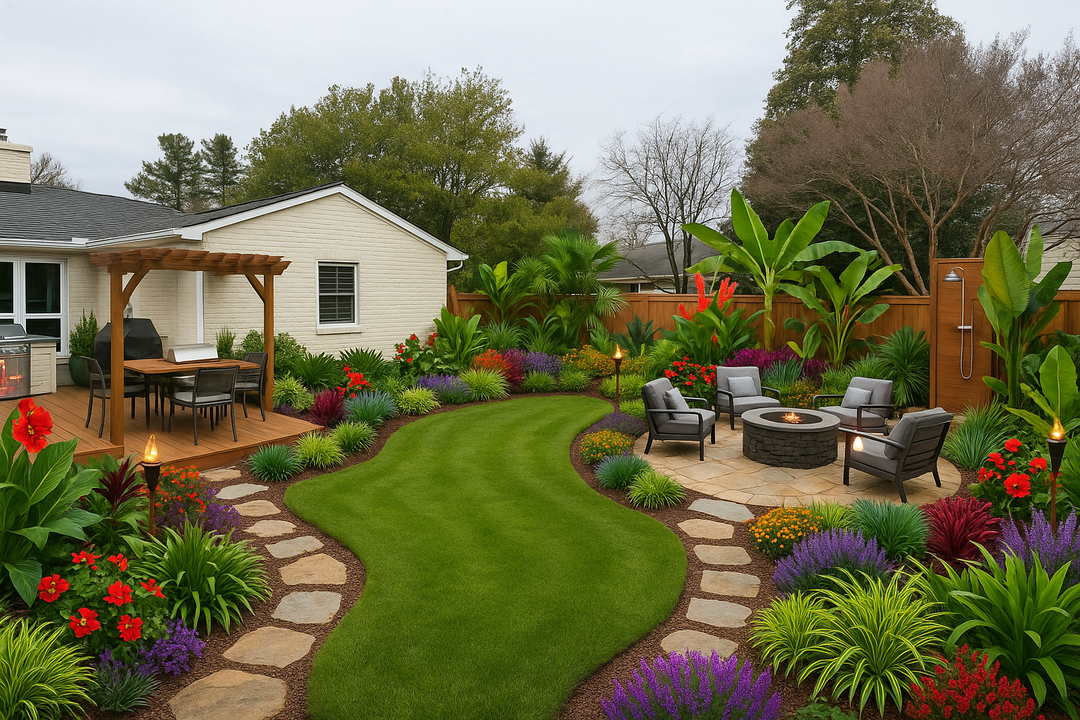Red Twig Dogwood is known for its striking red stems, which are most prominent in the winter when the leaves have fallen off. It's a deciduous shrub that can grow up to 9 feet tall and wide. In the spring, it produces clusters of small white flowers, followed by small white berries in the summer.
This shrub is quite versatile and can thrive in a variety of soil conditions, including wet or poorly drained areas. It prefers full sun to partial shade and benefits from regular pruning to maintain its shape and encourage new growth.
Red Twig Dogwood is often used in landscaping for its aesthetic appeal, as well as its ability to attract birds and other wildlife. It can be planted as a specimen plant, in mass plantings, or as a hedge. Additionally, the branches can be cut and used in floral arrangements or for decorative purposes.
|
Type: |
|
|
Origins: |
W. and N. USA, and Canada |
|
Height: |
6' - 9' |
|
Spread: |
7’ - 10' |
|
Spacing: |
8' |
|
USDA Hardiness Zone: |
3 - 8 |
|
Culture: |
|
|
Bloom Color: |
White |
|
Season of Interest: |
MAINTENANCE NEEDS: Low Maintenance. Pruning in late spring stimulates new growth, which has the best color. Plants become more vulnerable to diseases in hot summer climates south of zone 7. Susceptible to leaf and stem blights, canker, and leaf spot. Mulching will help keep roots cool in summer.
LANDSCAPE USES: Accents or Group Plantings, Borders, Woodland Gardens, Naturalized Areas, Ponds or streams, Foundational Plantings.
COMPANION PLANTS: Maple, Sweetflag, Itea
IMAGE: Andrea Moro, Cornus sericea flower (02), CC BY-SA 4.0, (2) Andrea Moro, Cornus sericea shrub (02), CC BY-SA 4.0, (3) Famartin, 2013-10-15 13 38 03 Dogwoods at Power House Picnic Site in Lamoille Canyon, Nevada, CC BY-SA 3.0, (4) Famartin, 2015-03-16 14 14 56 Oisier Dogwood in winter at the Northeastern Nevada Museum in Elko, Nevada, CC BY-SA 4.0
*As plants have ranges in appearance they may not appear as the images shown

